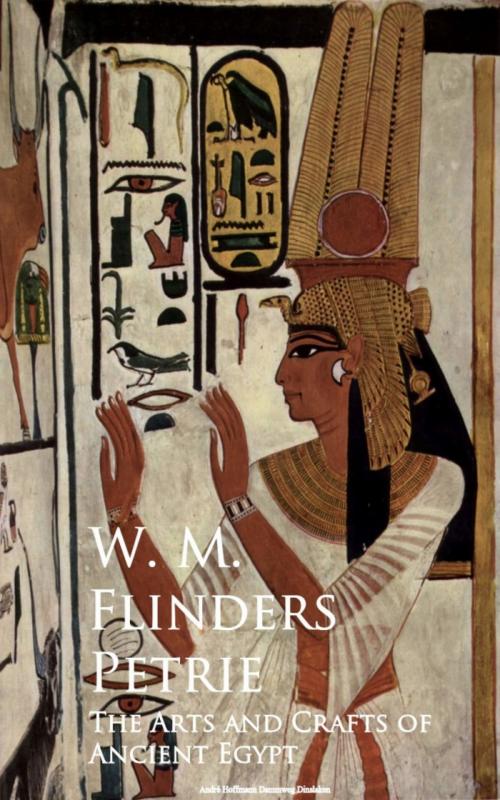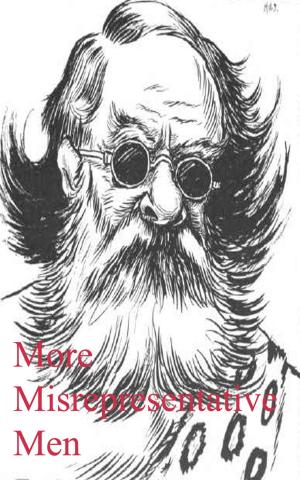| Author: | W. M. Flinders Petrie | ISBN: | 9783736416536 |
| Publisher: | anboco | Publication: | September 25, 2016 |
| Imprint: | Language: | English |
| Author: | W. M. Flinders Petrie |
| ISBN: | 9783736416536 |
| Publisher: | anboco |
| Publication: | September 25, 2016 |
| Imprint: | |
| Language: | English |
This present handbook is intended to aid in the understanding of Egyptian art, and the illustrations and descriptions are selected for that purpose only. The history of the art would require a far greater range of examples, in order to illustrate the growth and decay of each of the great periods; whereas here only the most striking works of each period are shown, in order to contrast the different civilisations. The origins and connections of the art in each age are scarcely touched, and the technical details are only such as are needed to see the conditions of the art. The archaeology of the subject would need as wide a treatment as the history, and these subjects can only appear here incidentally. It should be noticed that the divisions of artistic periods are often not the same as those of political history. Politically, the history divides at the XVIIth dynasty with the fall of the Hyksos, and at the XXIInd dynasty with the rise of the Delta[vi] government. But artistically the changes are under Tahutmes I, when Syrian influences broke in, and under the XXVIth dynasty, when the classical Greeks began to dominate the art. The effect of foreign influence in art is quite apart from political power; it is due to rival activities which may or may not mean a physical domination. The reader should ponder different cases, such as those of the spiral design of early Europe entering Egypt, of the Syrian and Cretan art in the XVIIIth dynasty, of the effect of Persia upon Greece, and of Greece upon Italy (both through Magna Graecia and the conquest of Greece), of the effect of the Goth, Lombard, and Northman on Europe, and of Japan on modern Europe. Some reflection on these great artistic movements will give a little insight as to the history of art. Regarding the illustrations, I have thought it more useful to give details large enough to be clearly seen, rather than to contract too much surface into a space where it cannot well be studied.
This present handbook is intended to aid in the understanding of Egyptian art, and the illustrations and descriptions are selected for that purpose only. The history of the art would require a far greater range of examples, in order to illustrate the growth and decay of each of the great periods; whereas here only the most striking works of each period are shown, in order to contrast the different civilisations. The origins and connections of the art in each age are scarcely touched, and the technical details are only such as are needed to see the conditions of the art. The archaeology of the subject would need as wide a treatment as the history, and these subjects can only appear here incidentally. It should be noticed that the divisions of artistic periods are often not the same as those of political history. Politically, the history divides at the XVIIth dynasty with the fall of the Hyksos, and at the XXIInd dynasty with the rise of the Delta[vi] government. But artistically the changes are under Tahutmes I, when Syrian influences broke in, and under the XXVIth dynasty, when the classical Greeks began to dominate the art. The effect of foreign influence in art is quite apart from political power; it is due to rival activities which may or may not mean a physical domination. The reader should ponder different cases, such as those of the spiral design of early Europe entering Egypt, of the Syrian and Cretan art in the XVIIIth dynasty, of the effect of Persia upon Greece, and of Greece upon Italy (both through Magna Graecia and the conquest of Greece), of the effect of the Goth, Lombard, and Northman on Europe, and of Japan on modern Europe. Some reflection on these great artistic movements will give a little insight as to the history of art. Regarding the illustrations, I have thought it more useful to give details large enough to be clearly seen, rather than to contract too much surface into a space where it cannot well be studied.















